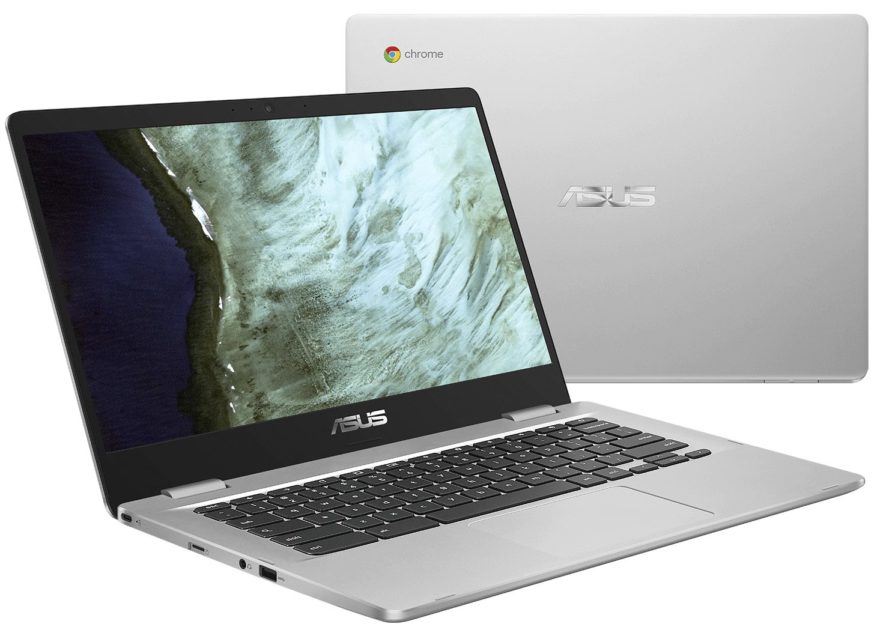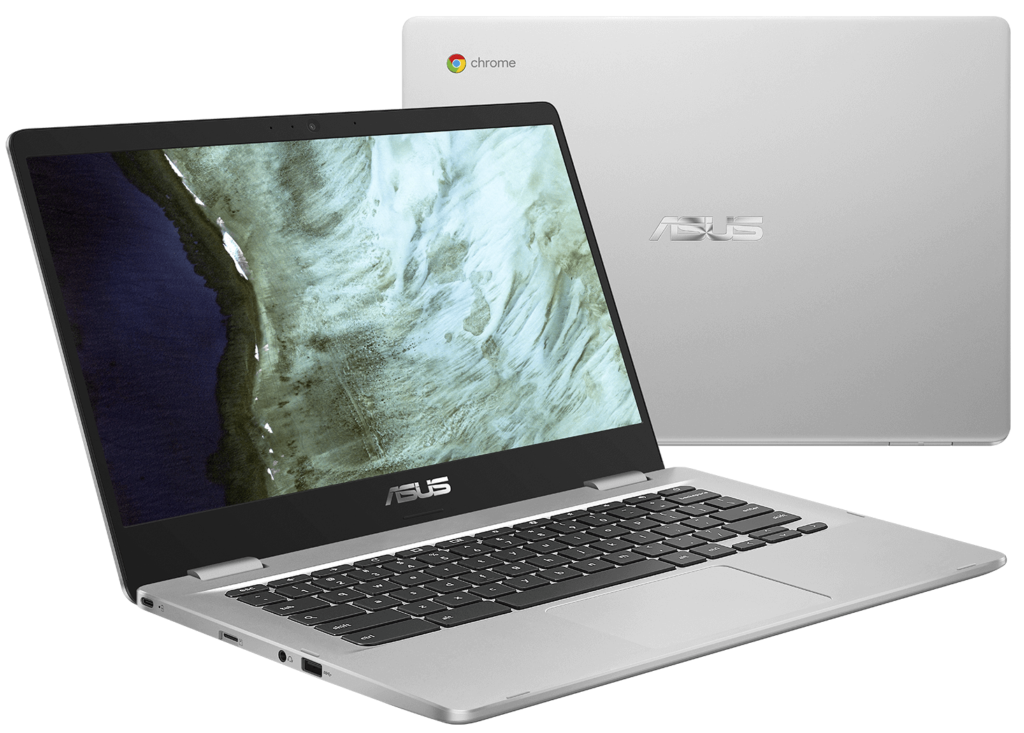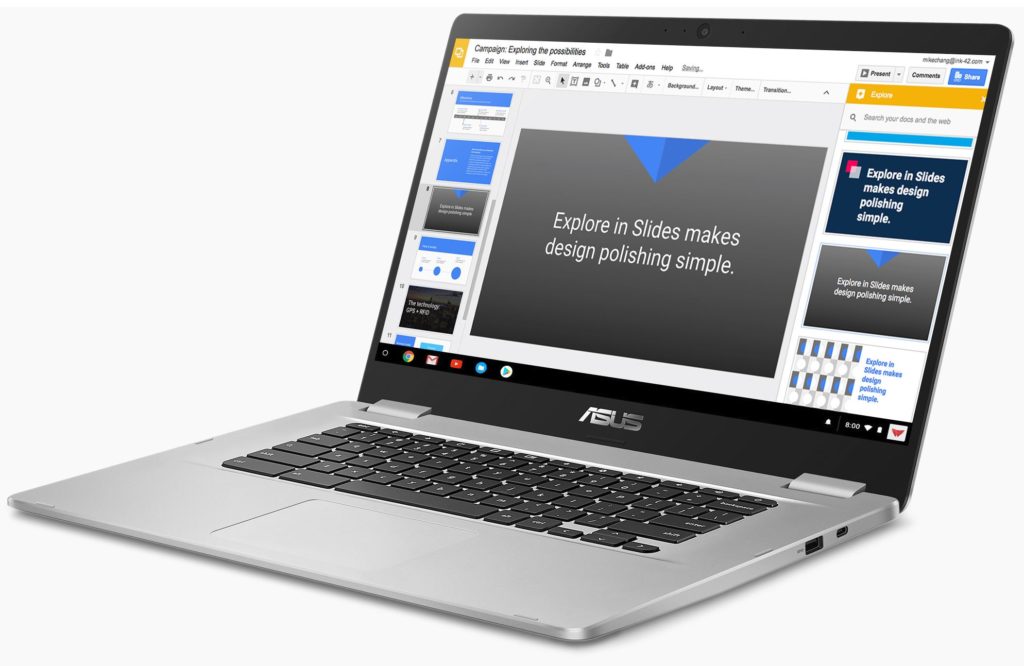Need some low-cost Chromebook options? Asus has three for you, starting at $229
With a slew of new Chromebooks from Acer, Dell, Google, and Lenovo now or soon hitting retailers, many are concerned that the market is shifting to more expensive devices. The least expensive from this bunch is $599 and you can easily spend $1,000. But I’ve been saying not to worry: There’s still a large consumer and education audience for entry-level Chromebooks that won’t break the bank. Asus validated that theory this week by debuting a trio of Chromebooks that start in the low-$200 range, with all three expected to run for 10 hours on a charge.
Here’s a rundown of the choices, which generally vary by screen size:
The Asus Chromebook C223 runs on a 1.1GHz Intel Celeron Dual-Core N3350 processor paired with 4GB of memory and 32GB of eMMC storage, although it also has an integrated card reader for external storage. It’s the smallest of the bunch with an 11.6-inch display that provides 1366 x 768 resolution. You won’t get touch support on the screen and the colors will likely be muted: Asus says the panel provides a 45% NTSC color gamut, which isn’t very high.
Most of the other essentials are there though: 802.11ac Wi-Fi, 2 USB Type C ports — one with power delivery to charge other devices — and 1 USB Type-A port, an HD webcam, and stereo speakers. No Bluetooth or backlit keyboard at this level for the 2.2 pound Chromebook, however. Still, we’re talking about a $229 entry price, making this a great secondary device for casual browsing or Android apps, or a potential option for the family.
Next up is the Asus Chromebook C423 that moves up in size while retaining many of its smaller sibling’s internals.
This 14-inch Chromebook runs on the same 1.1GHz Intel Celeron Dual-Core N3350 processor but can be had with an Intel Pentium Quad-Core N4200 chipset as an option. Memory choices are either 4GB or 8GB, based on the model, as is 32GB or 64GB of eMMC storage.
The base model display is the basically the same as the one on the C223 — bigger, of course — with a mediocre color gamut. I do like the thin bezels on the left and right of the display though.
There is a touch display option and you can fold the display back 180-degrees, although I don’t see many use cases for that position. You get an extra USB Type-A port over the C223 as well as Bluetooth 4.0 on this 2.7 pound Chromebook, which starts around $270.
Lastly is the big one: The Asus Chromebook C523 and its 15.6-inch display. This is essentially the same device with the same options as the C423 with the main difference being the screen size and the weight which is 3.7 pounds. If you expected a price boost along with the size and weight increase over the C423, you expected wrong. I see pricing at a few online retailers with inventory coming soon at the same $270 price-tag as the 14-inch model.
Again, none of these devices will have eye-popping colors or wide-viewing angles. Plus the Celeron and Pentium options are the lowest-powered silicon offered by Intel in a Chromebook these days. So it may be worth splurging a bit more if those things will bother you. If not, you can pick one of three sizes and get yourself an entry-level Chromebook for under $300 and call it a day.




Even though Asus was obviously trying to keep the top end of this lineup affordable, I believe that the Celeron 3965y would have been a much better design choice than the Pentium N4200. The Pentium is older and slower. Too bad, because models with the Pentium otherwise seem to be pretty nice.
I agree with most of what you say but for a Y series part the Celeron 3965Y has relatively low performance cores. There is a performance advantage there over the N4200 but it isn’t great. The superior GPU of the 3965Y would probably account for most of the perceived speed advantage of that chip. But, evidently, the N4200 has deeper reserves of processing power if Geekbench and Passmark are to be believed.
What a difference a year makes! My wife and I have 2017 Asus C202S Chromebooks, and love them, but the screens are small and they have only 16GB drives. For only a few bucks more we could now have larger screens and 32 GB drive I see. Since I run Linux with Crouton, the extra 16 GB would have been huge for me (all data is on a 128 GB SD card, and the 32 GB drive could have been put to good use for more Linux programs). Oh, well, that is how things go!